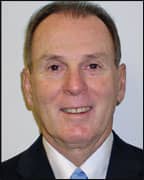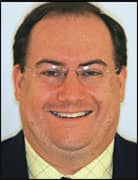by Donald J. Rinchuse, DMD, MS, MDS, PhD; Marc B. Ackerman, DMD; Daniel J. Rinchuse, DMD, MS, MDS, PhD; and Dara L. Rinchuse, DMD
Managing “helicopter” parents and their progeny
 |
A new generation of children is now visiting our orthodontic offices. Generation Y (Gen Y), or “Millennials,” are those children born between 1980 and 1995.1 This new generation of children (and parents) has philosophies and characteristics that are different from those of past generations.
One particular group of Gen Y parents is described in the lay media as “helicopter parents.” They are called this because they “hover” over their progeny like a helicopter.2-6 Helicopter moms are the most likely parent to be the “hoverers” in orthodontic offices, while helicopter dads may be more visible in extracurricular activities such as sports. Helicopter moms are “overly involved (in a paranoid way) in every state in their child’s development; that is, from basically in utero, through the college years and beyond.”2-6 These parents have become doormats for (and, to some extent, subservient to) their children, and seem to be afraid to let their children go and allow them to grow up.2
Helicopter Moms and Progeny
There is presently a parenting paradigm shift away from nurturing kids to parents serving their children and trying to make a perfect life for them.7-9 The fast-paced parents of today are “no longer raising kids but trophies.”2 Furthermore, the cyber age is playing a large role in parental overinvolvement. Cell phones, e-mails, and text messages start out as ways to keep tabs on a teen, but lead to mom and dad not unplugging when their child heads off to college.7 This may eventually turn into inappropriate parent involvement as the child grows and enters the workforce (such as calling employers at their children’s work- place).4,8-9
Interestingly, many helicopter parents believe that they are appropriately involved in their children’s lives and are more like “Guiding Angels”9 rather than pampering parents.2
Parenthetically, a “satellite parent” is on the opposite side of the spectrum from the helicopter parent; he or she is not involved in the children’s lives at all, instead managing the household from a distance and allowing others to do the daily care of their children.9
 |
 |
 |
 |
| Donald J. Rinchuse, DMD, MS, MDS, PhD | Marc B. Ackerman, DMD | Daniel J. Rinchuse, DMD, MS, MDS, PhD | Dara L. Rinchuse, DMD |
Certainly, all hyper-involved, modern-day parents cannot be classified as helicopter parents. Helicopter parents rise above just being overly involved in their child’s life. There is no estimation of how many parents could be described as helicopter parents.
The problem of overindulgent and protective parents could be the perception and obvious reality that they view America as less safe than in years past. The media coverage of Columbine and 9/11 has raised parents’ fears and awareness. Certainly, the world is a far more threatening place than for past generations, with child abuse, molestations, murders, abductions, stabbings, and shootings so prevalent in our society.2 The healthiest relationships between parents and emerging adult children seem to be when parents are able to step back from being an “in control” parent to acting as a mentor/teacher.8 This typically means being firm and authoritative, guiding, counseling, making expectations clear, providing lots of support, and providing understanding and love when difficulties arise.8
Implications and Recommendations
Although an apprehensive child and a so-called helicopter child have certain characteristics in common, there are differences. In addition to being apprehensive, the helicopter child is often disruptive, disrespectful, defiant, and may have a tantrum at the mere presence of a health professional that probably stems from prior conditioning. Mother is at hand (and in hand) to further reinforce the child’s unacceptable behavior. These characteristics are most evident in early childhood, but can continue into the teen years.
There is no standardized guideline that can be scripted for treating the children of all “helicopter parents.” Each parent/patient set deserves thoughtful and individualized consideration. At the outset, we want to make it clear that we are not saying that the characteristics and behavior displayed by the helicopter family are singularly unique to this group and generation. We are merely saying that it is more pervasive in the contemporary orthodontic office. Furthermore, the recommendations and suggestions made in this article are important for all patients, but are especially useful for helicopter families. One thing is certain: we orthodontists will probably not be able to significantly change the attitudes and behaviors of the patients (or parents); it is more a matter of how best can we deal with and tolerate them and still get our jobs done.
A patient-centered environment (autonomy) is far superior to a doctor-centered environment (paternalism).10 However, it is extremely important for parents and patients to know that the orthodontist is in control and in charge while they are guests in his or her office. The ground rules must be established at the get-go, and they should perhaps be tougher (at least at first) than for the typical patient—but applied in a caring manner. The rules can and should be relaxed as a rapport is developed between the orthodontist (and staff) and the patient/parent. It should be obvious that the orthodontist and staff are “treating” both the child and parent in these situations. As professionals, we need to find a way to redirect the parent’s overbearing attitude and negative energy in a more mature and appropriate direction. Somewhat paradoxically, helicopter parents do not seem to be willing to monitor their child’s home orthodontic responsibilities, such as oral hygiene and headgear wear.
Some general thoughts in dealing with the helicopter family follow. Perhaps helicopter moms can be made aware (in an indirect way) that they are not “guiding angels” as they may think, but “overprotective parents.” Next, maximize win/win situations while minimizing win/lose situations that inevitably deteriorate toward lose/lose scenarios in which both patient and provider lose.11 All the “ed-psych” principles that generally work for all patients are certainly beneficial for the helicopter child. These include progressions, backward chaining, operant conditioning, shaping, reframing, reinforce- ment theory, hypnosis, cognitive dissociation, pacing, learning by doing, show-and-tell, neurolinguistic programming, metaphors, and therapeutic metaphors.12 A detailed and erudite discussion of these techniques has appeared in previous articles.12-13
Empathy is an important quality for orthodontists and staff.14 Age-appropriate communications is also necessary.15 Certainly, there are differences in dealing with very young children, preadolescents, and teenagers.15 The orthodontist and staff should know and use the patient’s name (and nickname) as often as possible. Compliment the patient, particularly while in the presence of the parent. Give three words of praise for every word of criticism.15 It would also benefit the orthodontist and staff to know the hobbies, interests, and peculiar behavior tendencies of each child.15 Telephone calls to patients (via the parents for very young patients) after initial treatment or when there is some type of discomfort have clearly been shown to reduce anxiety by demonstrating concern and a sense of caring.16 Interestingly, the content of the conversation is not as important as the show of concern.16 Other forms of communication, such as e-mails and text messages, are worthy of consideration. It needs to be stressed here that all communications to any child should be approved by the parents or else go through the parents first and then get passed on to the child.
“Getting down to eye level” with the patient is important, as well as carefully explaining what will be done and how it will help him or her. Listen before speaking. Observe the body language of the patient. The orthodontist or staff member would be wise to ask open-ended questions that require the patient to answer in phrases or sentences rather than with a mere “yes” or “no.”15
Although the comforting presence of a parent may appear to be the best answer, this is clearly not the best patient-management approach for this subgroup of orthodontic patients. Many children of helicopter parents deliberately act out just to get a “rise” from mom. They scream and cry just to see what mom will do. The best strategy here is to separate the child and parent. The orthodontist and staff can mention to the parent that for infection-control reasons, medicolegal reasons (such as “bystander” liability17), and confidentiality reasons, the office’s policy does not permit the parent back in the treatment room unless there is some very unusual circumstance. Keeping helicopter parents out of the treatment areas may be a problem if other parents are allowed there and the helicopter parents observe this.
“Heliparents” are more inclined to be aware of what is written on the Internet, so be prepared to answer questions. As a result, heliparents may require more time for the initial examinations and consults. These parents as well as those whose children are apprehensive, have ADD/ADHD, and so forth need to be emotionally and operationally prepared by the parents and orthodontic staff before each orthodontic visit. Some contingency reward programs (in simple terms, giving prizes at the end of treatment) work well for some children by honoring and reinforcing proper behavior.12,15 Start slow and “shape” the patient and parent toward the desired behavior.12
For the very immature and apprehensive child, it may be advisable to postpone orthodontic treatment until the child is more prepared, even though this may make orthodontic treatment more complicated later on.15 It is one thing to attempt to provide services for the very apprehensive orthodontic patient, and it is another thing to deal with those who are defiant. A defiant patient will physically fight in order not to have appliances placed. We must be reminded at times that orthodontic treatment is an elective procedure. As Milber and Haeger wrote, “You cannot push or drag a patient of any age through treatment.”15 For borderline “extraction versus nonextraction” treatment planning decisions, it may be wise to err toward a nonextraction treatment protocol, at least initially, to gauge the patient’s cooperation. This has been termed “therapeutic diagnosis.”18 The most important appointments and communications between these apprehensive patients (and parents) and the orthodontic office occur during the initial visits. These patients should be scheduled so as to not interfere with other patients’ treatments. Most offices that use an open-bay setup usually have at least one chair that is in a closed bay and can be used for the helicopter patient.
The orthodontist should consider shorter treatment appointments for the helicopter patient. An extended time in the dental chair leads to trauma and stress for the patient. Also, the orthodontist may consider charging a higher fee for these patients because they are more difficult to manage and take up more office time. From a pragmatic view, this fee adjustment may be difficult to implement. Lastly, the patient and parent must be advised that if the patient is defiant rather than compliant, orthodontic treatment will be prematurely terminated.
Some offices use the one-visit consultation, in which the initial examination, records, and the consult are merged into one office visit (rather than two or three).19 This practice seems to be based more on practice-management and business principles rather than on patient-management and professional principles. We do not recommend this for the helicopter patient or any other apprehensive patient.
A number of things can be done during treatment. For example, the patient is scheduled to have maxillary partial braces placed (upper 2 x 4; four maxillary incisors, and two maxillary posterior teeth) in a phase I treatment protocol. Instead of banding the maxillary first molars for anchorage (in situations when a headgear in not indicated), perhaps the maxillary deciduous first or second molars could be bonded. Bonding the first or second deciduous molars rather than banding the permanent first molars would take less time, be less stressful, would not require a prior separation appointment, and would better prevent the archwire from dislodging due to a shorter archwire span from posterior anchor teeth up to the incisors. An archwire is not initially inserted, and just colored rubber elastics are placed over the brackets (assuming you are using a ligating bracket system). For several appointments, you can just replace theelastics without placing an archwire. Appointments may be scheduled every 2 weeks until orthodontic forces are applied to the teeth. The parent(s) must be made aware that no tooth movement is taking place for several appointments, and that the purpose is to develop the patient’s confidence in the orthodontic office.10,12
Conclusions
Gen Y, and in particular the “helicopter mom” and her progeny, offer unique patient-management challenges to the orthodontist and his or her staff.Orthodontists must give deliberate attention to managing this new breed of patients and parents. At times, the best recommendation for the very immature and apprehensive patient is to postpone treatment until the patient is more receptive toward treatment rather than forcing treatment upon him or her. All the educational and psychological principles that work well for other apprehensive patients work well for this group of patients. The orthodontist and staff must be authoritative at guiding and counseling both parent and child; make expectations clear; and provide lots of support, understanding, and care when difficulties arise.3
Donald J. Rinchuse, DMD, MS, MDS, PhD, is a clinical professor of orthodontics at the University of Pittsburgh School of Dental Medicine and is in private practice in Greensburg, Pa. He can be reached at
Marc B. Ackerman, DMD, is an associate professor and director ofthe Orthodontic Fellowship Program at Jacksonville University School of Orthodontics, Jacksonville, Fla.
Daniel J. Rinchuse, DMD, MS, MDS, PhD, is a clinical professor of orthodontics at the University of Pittsburgh School of Dental Medicine and is in private practice in Greensburg, Pa.
Dara L. Rinchuse, DMD, is an orthodontic resident at Jacksonville University School of Orthodontics.
References
- Generation definition. Wikipedia Web site. en.wikipedia.org/wiki/Generation. Accessed September 19, 2008.
- O’Farrell J. The problem with paranoid parents. BBC News Web site. news.bbc.co.uk/2/hi/uk_news/magazine/4419160.stm. Accessed September 19, 2008.
- McAllister J. Helicopter moms. YourHubDenver Web site. [removed]denver.yourhub.com/Denver/Blogs/Family-Community/Parenting/Blog~389212.aspx[/removed]. Accessed September 19, 2008.
- Do ‘helicopter moms’ do more harm than good? ‘Hovering mothering’ has become common on college campuses. ABC News Web site. abcnews.go.com/2020/Health/story?id=1237868. Accessed September 19, 2008.
- Helicopter moms. September 14, 2003. WriteOutLoud Web site. writeoutloud.typepad.com/writeoutloud/2003/09/helicopter_moms.html. Accessed September 19, 2008.
- Helicopter moms. CollegeNET Web site. www.collegenet.com/elect/app/app?service=external/Forum&sp=6280. Accessed September 19, 2008.
- Mcleod LE. Growing up means letting kids fly solo. ClubMom Web site. www.clubmom.com/display/269388?printer_friendly-true&fromPage+269388. Accessed September 19, 2008.
- Q&A: Advice on helicopter moms. October 31 2005. ABC News Web site. abcnews.go.com/2020/US/story?id=1235218. Accessed September 19, 2008.
- In defense of helicopter moms. August 31, 2005. Jo Ann Skousen’s Odds&Trends Web site. [removed]www.mskousen.com/otnews.php?id=26[/removed]. Accessed September 19, 2008.
- Rinchuse DJ, Rinchuse DL, Sweitzer EM. What is the patient’s name? Am JOrthod Dentofacial Orthop. 2004;126(2):234-236.
- Bertolami CN. Why our ethics curricula don’t work. J Dent Edu. 2004;68(4):414-425.
- Rinchuse DJ, Rinchuse DJ. The use of educational-psychological principles in orthodontic practice. Am J Orthod Dentofacial Orthop. 2001;119(6): 660-663.
- Rinchuse DJ, Rinchuse DJ. Overcoming fingersucking habits. J Clin Orthod. 1986;20(1):46-47.
- Sherman JJ, Cramer A. Measurement of changes in empathy during dental school. J Dent Edu. 2005;69:338-345.
- Milberg DJ, Haeger RS. Management & Marketing: Communicating with young patients: look, listen, learn, and lead. J Clin Orthod. 2008;41(12):751-755.
- Bartlett BW, Firestone AR, Vig KWL, Beck M, Manucha PT. The influence of a structured telephone call on orthodontic pain and anxiety. Am J Orthod Dentofacial Orthop. 2005;128:435-441.
- Jerrold L. Orthodontics as a spectator sport: does bystander liability attach? Am J Orthod Dentofacial Orthop. 1998;113(2):242-244.
- Ackerman JL, Proffit WR. Treatment response as an aid in diagnosis and treatment planning. Am J Orthod. 1970;57:490-496.
- Kandasamy S, Bokas J. Is a single consultation always more efficient? Orthodontic Products. 2008;15(1):48.










